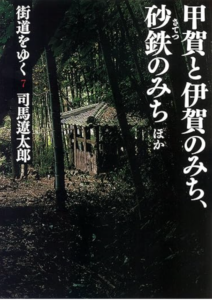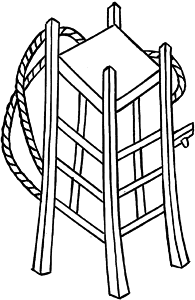Life Tips & Miscellaneous Travel and History Zen Philosophy and History Art and Sport Navigation of this blog
Summary
Travel is an act for human beings to visit new places and experience different cultures and histories. Through travel, people can actually feel historical events and people’s lives by visiting historical places and cultural heritage sites, and can gain a deeper understanding of history and broaden their own perspectives. In this section, we will discuss the historical background of the trip and the places visited based on Ryotaro Shiba’s “Kaido yuku” (On the Road) about this journey and history.

Matsuo Basho mentioned in “On the Road: Akita Stroll, Matsuo Basho, Masumi Sugae, and Ningyo Dosojin.” wrote four travelogues besides the famous “Oku no Hosomichi” (the Narrow Road to the Deep North): “Nozarashi Kigyo”, “Kashima Kigyo”, “Oi no Kobun” and “Sarashina Kigyo”.
Of these, “Oi no Kobun” is a travelogue of Basho’s departure from Fukagawa, Edo, in October 1687, down the Tokaido Highway, through Irago, and back to Iga, where he spent the New Year and the spring of March traveling with his disciple Tokoku to Yoshino, Koyasan, Wakaura, Nara, Osaka, Suma and Akashi.
A few years after his trip, Basho devoted himself to the completion of this travelogue, but left it in an undecided draft with his pupil Otoshu and returned to Edo (now Tokyo). This travelogue is also called “Oi no kobun” or “Ushin kiko” (Travels from the Year of the Rabbit to the Year of the Dragon). As stated in the preface, it is a collection of Basho’s “short notes along the way” and contains his theories on elegance, travel, travel, etc. It is not necessarily a comprehensive travelogue, but more a short travelogue than a full-length work. The collection is not necessarily a collection of travelogues, but rather a collection of short travelogues, and the fact that the ideas and the phrases were published together in a single work is what is noteworthy.

Ryotaro Shiba’s “Kaido yuku” Akashi Kaikyo to Awaji Michi describes a trip that started from Akashi, the end of the oi no kobun, and landed on Awaji Island from Hayashizaki fishing port by the Haridan Steamship because there was no Awaji Ohashi Bridge at that time.

Let’s start with “Oi no kobun”.
Travelers call me Hatsushigure
Basho composed this haiku and set out westward from Fukagawa, Edo, as described in “Kaido yuku Honjo-Fukagawa Area“. This is Basho’s third travelogue, following his “Nomadashi Kiko” and “Kashima Kiko”. The oi mentioned in the theme here is “a box-shaped stroller. It is said to be “a box-shaped box used to carry Buddhist ritual utensils, clothing, etc.” It is the backpack of today, as often carried by monks in period dramas.
Both “Nomadashi Kiko” and “Oi no Kobun” leave Edo and travel to the Kansai region via their hometown of Iga, but while the former starts on the Tokaido Highway, the latter begins with a sudden trip from Narumi in Aichi Prefecture to Irago. Irago is a cape jutting out into the sea, not a lake, although it has the word “lake” in its name.

The route to Irago is to take the Shinkansen to Toyohashi Station, transfer to the Toyohashi Railway to the last stop, Mikawarada, and take the Toyotetsu bus to Irago. Here Basho wrote
I am glad to find a hawk at Iragozaki.
Basho wrote “I am glad to find a hawk at Iragozaki. Basho then headed for his hometown of Iga, as described in “Koga to Iga no Shigaraki no Michi” (On the Road to Shigaraki, Koga and Iga). The following year, 1688, after spending a year in Iga, Basho left Iga for Ise, heading for Yoshino, famous for its cherry blossoms.
At Yoshino, I too will show you my hinoki no kigasa
Basho composed this poem.

The route from Ise to Yoshino-yama includes Haseji Temple in Sakurai City, Nara Prefecture; Katsuragi, which is mentioned in “Kaido yuku – Katsuragi Road“; Miwa Mountain, which is mentioned in “Kaido yuku – Takeuchi Kaido and Ancient Japan“; Tamuno-mine, Seirei-ga-taki Waterfall, and Yoshino.
The current route from Ise to Yoshino is a two-hour trip on the Kintetsu Railway from Ise City, Ise-Nakagawa, Yamato-Yagi, Kashihara Jingu-mae, to Yoshino.

Basho stayed in Yoshino for three days and then headed for Koyasan as described in “Kaido yuku Koyasan-michi” (The Road to Koyasan). Nowadays, the journey from Yoshino to Koyasan takes about 2 hours and 30 minutes.
From Koyasan, Basho headed for Wakaura in Kishu, which is mentioned in “Kaido yuku Kino River basin Negoroji Temple and Zogashu” and went to Kimiidera Temple.
In Gyoharu, I catch up with them at Wakanoura.

From Wakaura, the train goes via Nara and Osaka to Suma and Akashi in Hyogo Prefecture. Today, the trip from Wakayama to Suma takes about 2 hours and 30 minutes. The journey from Wakayama Station to Suma takes the Nankai Electric Railway to Shin-Imamiya in Osaka, JR from Shin-Imamiya to Sannomiya, then Hankyu Line, High Speed Kobe, and JR to reach Sumaura Park.
Suma is famous as the site of the Ichinotani Battle in the Genpei War (Jisho/Juei War), and is also mentioned in the Awaji/Akashi trip from “Kaido yuku” Vol. 7.

The battle of Ichinotani was a battle between the Minamoto and Taira clans, as described in “Kaido yuku – Choshu Road“, and it was the “beginning of the end” of the downfall of the Taira clan. Taking advantage of the internal strife, the Heike gathered forces in Kyushu and Shikoku, re-entered Suma, and began preparations to attack Kyoto.
In response, Yoshitsune led 70 elite cavalrymen in a surprise attack from a precipice behind Ichinotani via the mountain side, as described in “Kaido yuku – Tanba Sasayama Kaido (Road to Sasayama)“, throwing the Heike forces into confusion and winning the battle.

The Heike were later defeated at Yashima in Shikoku and finally fell at Dannoura in Yamaguchi.
The “oi no kobun” starts in Suma and ends in Akashi, famous for its ekiben “hittaridako”.

From Suma and Akashi, we will continue on to Awaji Island, as described in “Kaido yuku: Travel and History of Awa and Awaji Island“.
The next trip will be a journey to the site of tatara iron manufacturing from Izumo in Shimane Prefecture to Kibi in Okayama Prefecture, based on Ryotaro Shiba’s long-standing interest in iron.


コメント